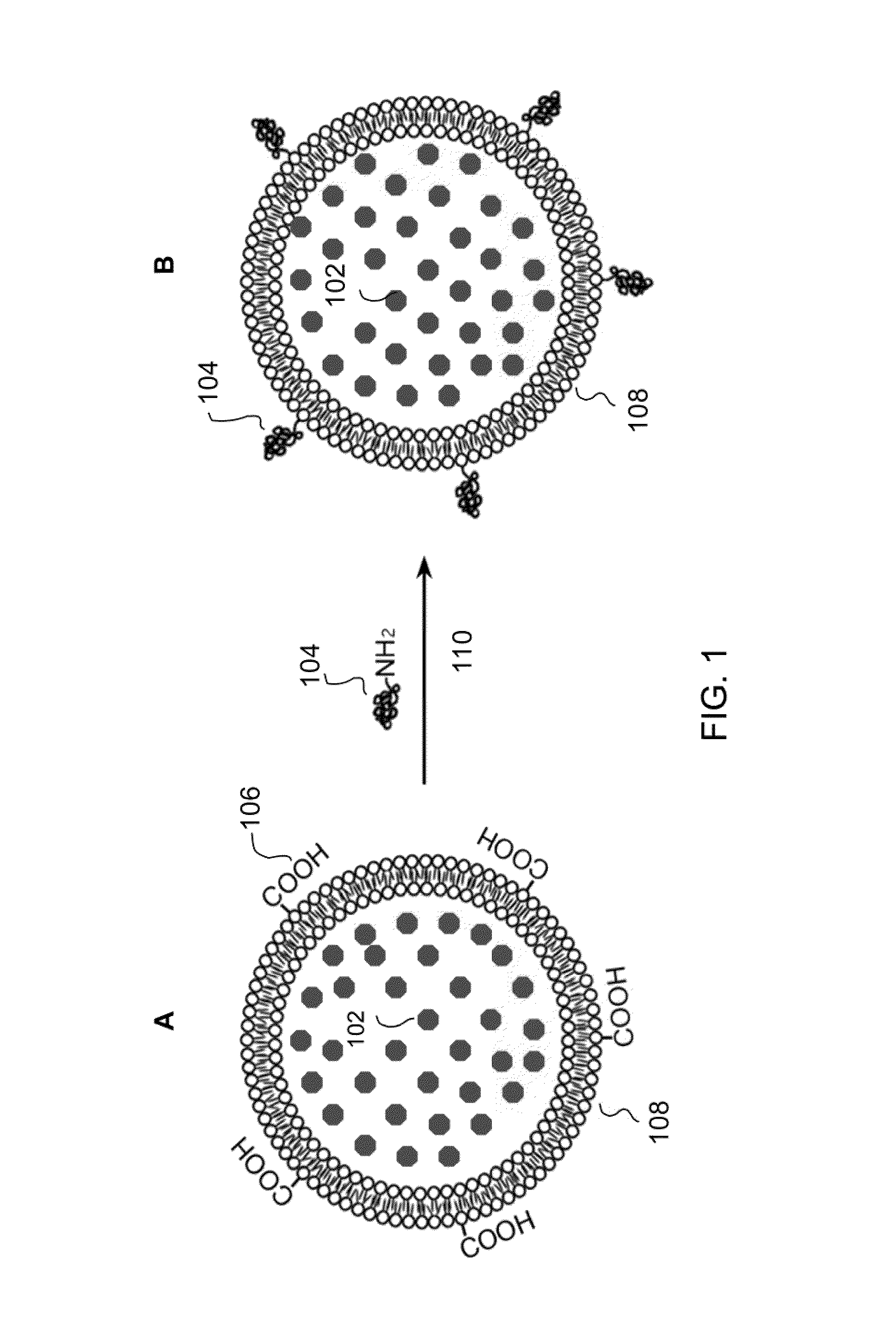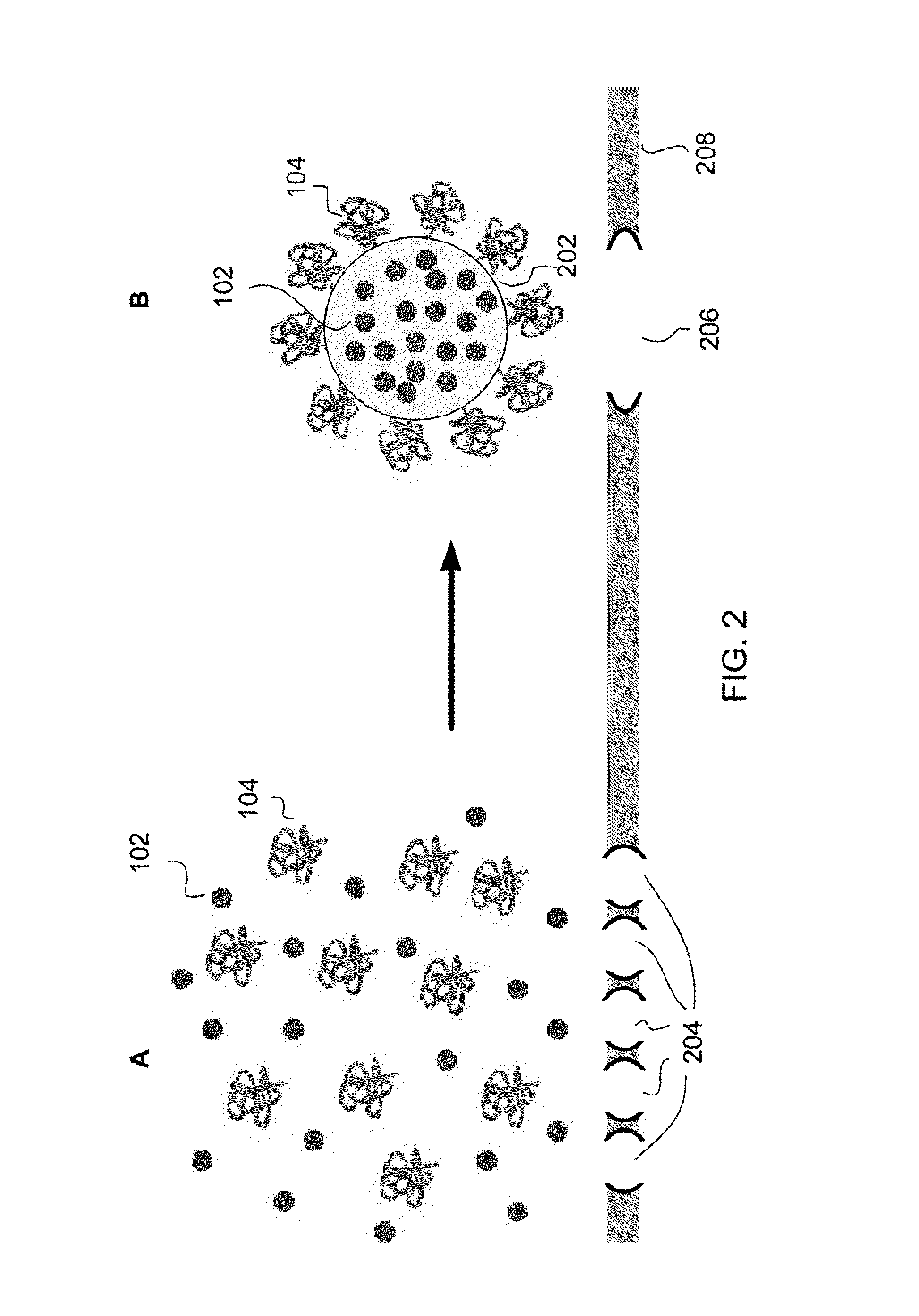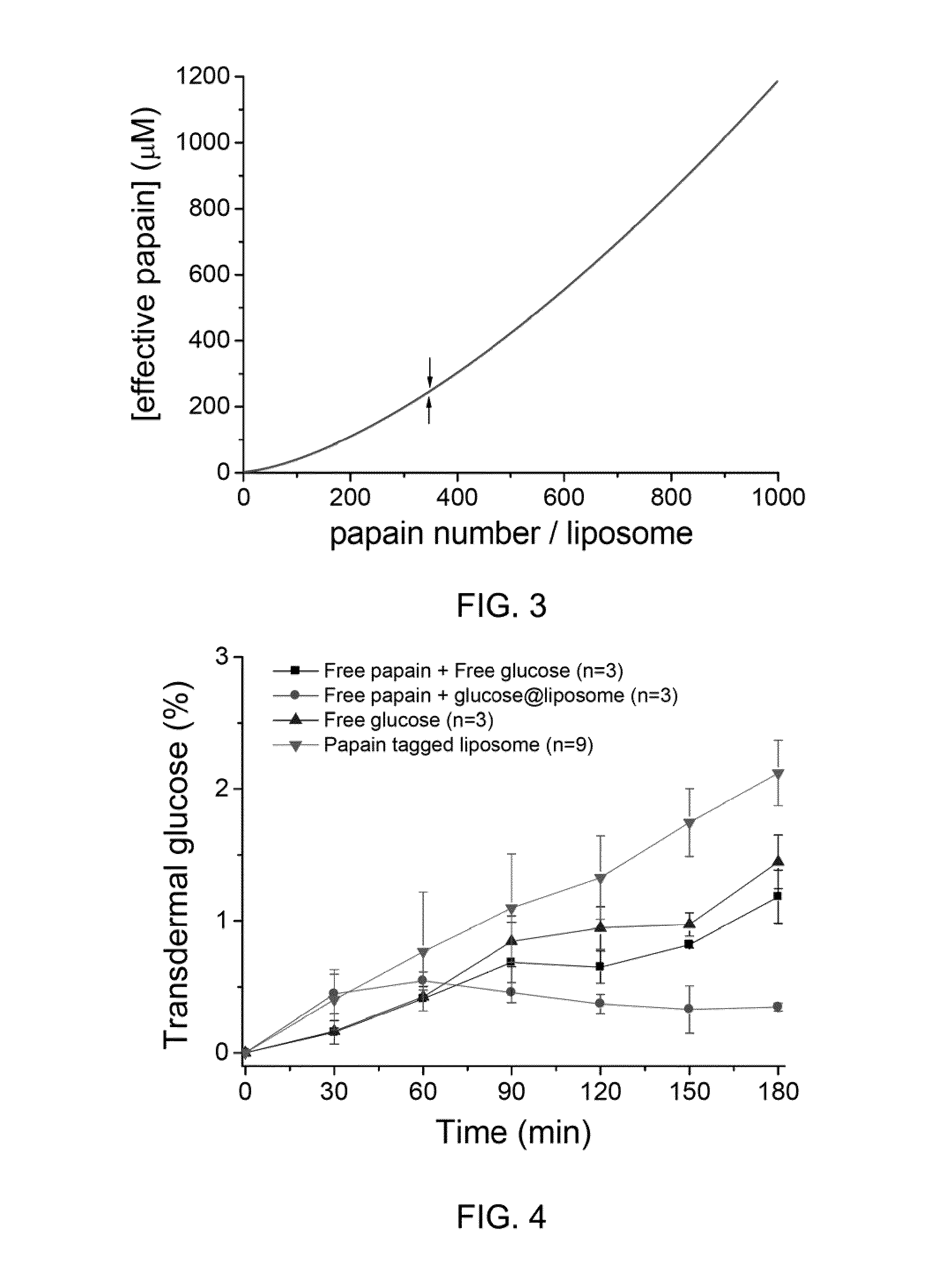Methods and compostions for enhancing transdermal drug delivery
a transdermal drug and composting technology, applied in the field of drug delivery, can solve the problems of limited application of only a few drugs, few drugs and no proteins or peptides currently administered transdermally for clinical applications, and low skin permeability, and achieve the effect of enhancing the delivery of a bioactive agent across the skin
- Summary
- Abstract
- Description
- Claims
- Application Information
AI Technical Summary
Problems solved by technology
Method used
Image
Examples
example 1
Preparation of Bioactive Agent-encapsulated Vehicles
Carboxyfluorescein Encapsulated Liposomes
[0025]1,2-Dioleoyl-sn-glycero-3-Phosphoethanolamine-N-(succinyl), or succinyl PE, a commercially available phospholipid containing carboxyl groups was used for coupling to papain. The succinyl PE, 1,2-Distearoyl-sn-glycero-3-phosphochline (DSPC) and cholesterol were mixed together in a weight ratio of 1:9:3 in a chloroform solution in a warm water bath at about 60° C. A thin lipid film was subsequently formed by removing the solvent.
[0026]The carboxyfluorescein (CF) solution was added to the thin lipid film. The resulting mixture was stirred for about an hour in a water bath of about 60° C. The mixture was then pushed through a mini extruder (filter size: 0.2 μm, 20 times) and subsequently passed through a Sephadex G-25 column to separate the CF-encapsulated liposomes.
Nanoparticle-encapsulated Liposome
[0027]Poly(lactic-co-glycolic acid) (PLGA) nanoparticle-enicapsulated liposomies were prepa...
example 2
Preparation of Proteolytic Enzyme-tagged Drug Vehicle
Conjugation of Papain on the Surface of Liposome
[0032]The conjugation of the primary amine group of papain compound (1 mg) with the carboxyl group of liposome (2×1012 liposome / ml) was achieved by using the coupling agent 1-ethyl-3-[3-dimethylaminopropyl]carbodiimide hydrochloride (EDC; Sigma Chemical Co) (0.2M). The coupling reaction 110 was performed in phosphate buffer saline at room temperature for 2 hr. The papain-tagged liposomes were purified by HPLC (high pressure liquid chromatography) using a size-excitision chromatographic column (BioSep SEC-S2000, Phenomenex) to remove un-reacted papain.
[0033]FIG. 1 is a schematic drawing showing the coupling of papain molecules 104 to carboxyl groups 106 on the surface of the lipid bilayer of liposome 108 via the EDC coupling reaction 110. The EDC is a carboxyl and amine-reactive zero-length cross linker. The EDC reacts with the carboxyl groups 106 first and forms an amine reactive O-a...
example 3
Transdermal Delivery of Encapsulated bioactive Agent
[0040]The efficiency of the transdermal penetration of proteolytic enzyme-tagged drug vehicles was evaluated using in vitro Franz Diffusion cells. Briefly, a piece of porcine abdominal skin tissue sliced to 500 μm thickness using electric dermatome (Zimmer Inc., USA) was mounted between two half-cells of a vertical Franz Diffusion cell (R=15 mm, skin area: 1.77 cm2, the volume of receiver: 12 ml) and fastened with a clamp.
[0041]The permeation efficiencies were measured on various modes of transdemial drug delivery. The following four different modes of drug delivery were tested: (1) glucose-encapsulated liposome with surface-tagged papain (350 papain / 200 nm liposome, total papain 26 μg / ml, total glucose 5 mM); (2) free papain (500 μg / ml)+free glucose(5 mM) (3) Free glucose (5 mM); and (4) Free papain (500 μg / ml)+glucose-encapsulated liposome (5 mM).
[0042]Samples (1 ml per sample) from each group were applied to the donor compartmen...
PUM
| Property | Measurement | Unit |
|---|---|---|
| concentration | aaaaa | aaaaa |
| concentration | aaaaa | aaaaa |
| concentration | aaaaa | aaaaa |
Abstract
Description
Claims
Application Information
 Login to View More
Login to View More - R&D
- Intellectual Property
- Life Sciences
- Materials
- Tech Scout
- Unparalleled Data Quality
- Higher Quality Content
- 60% Fewer Hallucinations
Browse by: Latest US Patents, China's latest patents, Technical Efficacy Thesaurus, Application Domain, Technology Topic, Popular Technical Reports.
© 2025 PatSnap. All rights reserved.Legal|Privacy policy|Modern Slavery Act Transparency Statement|Sitemap|About US| Contact US: help@patsnap.com



